Pawscessories is reader-supported. When you buy via links on our site, we may earn an affiliate commission at no cost to you.
Learn more.
There is no one definitive answer to the question of when doing blue heelers calm down.
Each dog is different and will respond differently to various stimuli.
However, some general trends can be observed from these dog breeds.
With this information, dog owners can understand when blue heelers calm down and how to help them calm down better.
In this post, we will examine why a blue heeler may not be calming down and when you should expect to see them calm down.
I will also cover some tips to help them along the way!
Let’s dive in.
Table of Contents
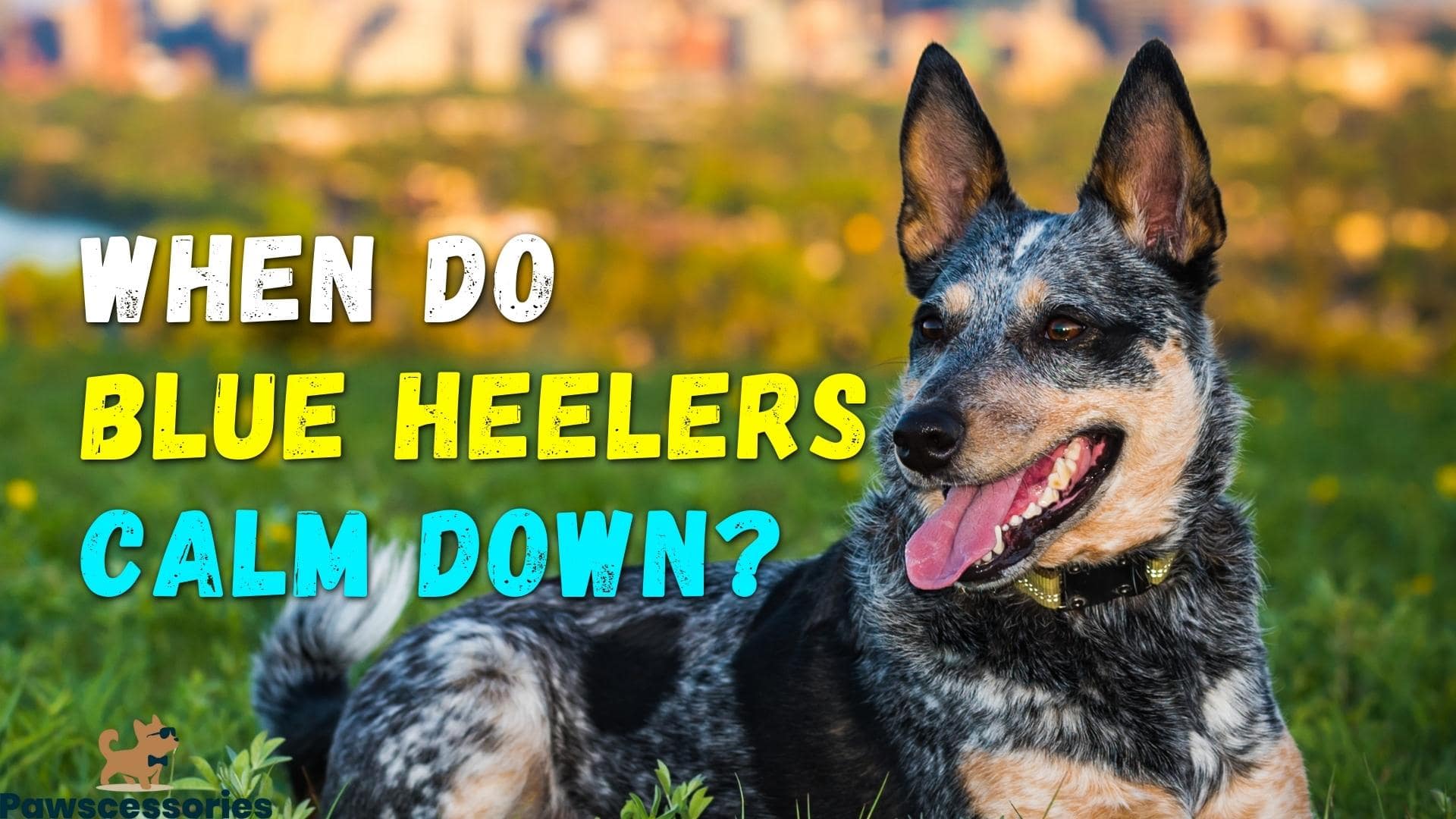
When Do Blue Heelers Calm Down?
The Blue Heeler, also known as the “Australian Cattle Dog,” is a high-energy herding dog.
They were initially bred to herd cattle. In order to do this job, they needed high stamina and strength.
This can also explain why they have so much energy to expend.
This can sometimes make them seem like they never calm down!
When it comes to the actual timeframe for when blue heelers calm down, it really varies from dog to dog.
The average age at which blue heelers calm down is around four to six years old.
However, this is just an average, and some dogs may start to calm down earlier or later than this.
It’s also important to note that Blue Heelers will not keep their puppy energy until these ages. Still, they will gradually start to become calmer as they mature.
The most significant factors that can influence when your blue heeler will start to calm down include:
- Their overall health and well-being
- The amount of exercise they get
- How they are trained and socialized
- The food they eat
- How old they are
All of these factors can affect how much energy your blue heeler has and how they behave.
But generally, the answer to what age do cattle dogs calm down is 4-6 years.
Are Australian Cattle Dogs Hyper?
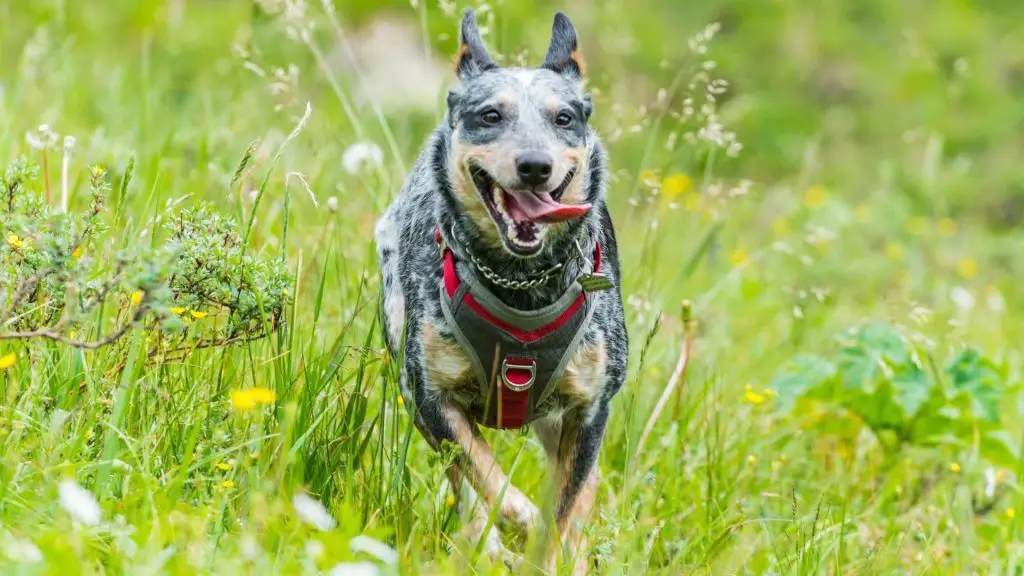
The short answer is yes, Australian Cattle Dogs are known to be hyper dogs.
They are high-energy dogs that need a lot of exercise to stay healthy and happy.
If you do not provide them with enough outlets for their energy, they may start to become destructive or act out in other ways.
Their high energy can make it hard to keep up with them, but it’s important to remember that they are just trying to stay busy and burn off all their excess energy.
They won’t seem nearly as hyper if you can burn off their excess energy. This will also help calm them down.
Further Reading: 7 Simple Strategies To Quickly Calm Your Hyperactive Dog
Why Are Blue Heelers So Hyper?
As we’ve mentioned, blue heelers are high-energy herding dogs.
They were bred to be working dogs, so they tend to have higher than normal energy.
This can make them seem hyper, especially when their energy does not have an outlet.
Giving the blue heeler a job is the best thing to keep a cattle dog busy.
This will also, in turn, help with their hyperactivity.
Blue Heeler Energy & Behavior Year By Year
To better understand when an Australian cattle dog will calm down, here is what you can expect year by year as they grow.
Birth To 1-Year-Old
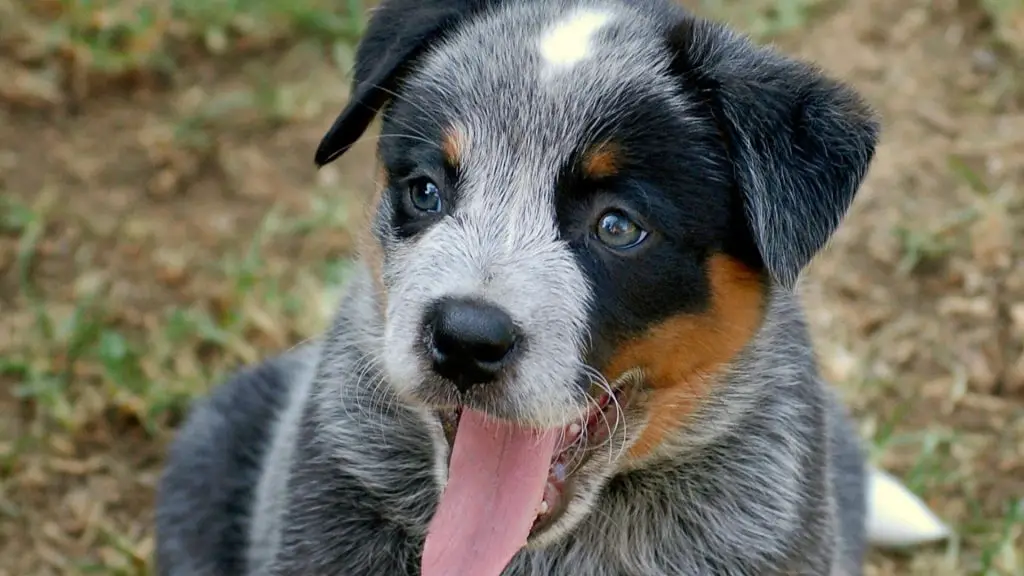
At this age, your blue heeler will be full of energy and very playful.
You should expect to see their puppy energy for most of this time.
They will want to explore everything and be constantly on the move.
It’s important to give them plenty of exercise and outlets for their energy at this age, or they may become destructive.
You can also expect them to start herding anything that moves, including other animals and people.
This is just their natural instinct kicking in, and they do not mean any harm by it.
It’s important to start training and socializing your blue heeler as early as you can.
Don’t be surprised when you find them running around like a crazy dog. The “Zoomies” are real with this breed!
This is just their way of releasing energy, and it’s important to let them do this.
2 To 4 Years Old
During this time, you will see your blue heeler’s energy levels decline a bit.
They will still need plenty of exercise, but they won’t be quite as hyperactive as when they were younger.
You may find that they are calmer indoors and have more self-control.
However, they may still have moments of zoomies and hyperactivity.
This is normal, and you should not be concerned unless it’s excessive.
They should understand when it’s playtime versus relaxation time.
5 to 9 Years Old
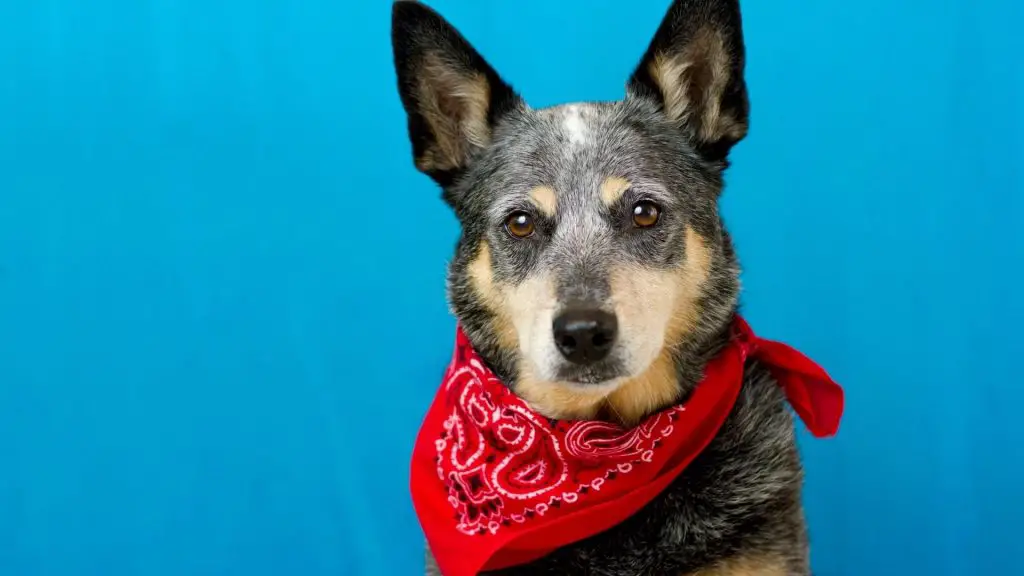
Your blue heeler’s energy levels will continue declining at this age.
Most will have calmed down and are more relaxed than they were in their younger years.
However, they will still need some exercise to stay healthy and happy.
You may also find that they start to slow down and prefer to lounge around more than they used to.
Age 10+
Blue Heelers have a lifespan of about 12-15 years.
From 10 years of age and on, you can expect their energy levels to be much lower.
They are in their senior years at this point and won’t be able to function in the same way they used to.
They will need less exercise and more rest.
At this point, most are calmer and more relaxed than ever.
6 Reasons Blue Heelers Won’t Calm Down
There are a few main reasons an Australian Cattle Dog may struggle to calm down.
Before going through the list, these are general reasons for blue heeler cattle dogs.
1. Lack Of Exercise / Boredom
One of the main reasons a blue heeler may not be calming down is due to lack of exercise.
These dogs are bred to work and have a lot of energy to burn!
If they are not given an outlet for this energy, they will become restless. They may even start to exhibit destructive behaviors.
So, one of the best things you can do for your blue heeler is to ensure they are getting plenty of exercise.
A good rule of thumb is at least one hour per day, though more is always better.
A tired dog is a calm dog, so make sure you give them plenty of opportunities to run and play.
2. Anxiety & Stress
Another reason your Blue Heeler may not be calming down is anxiety or stress.
Just like humans, dogs can get stressed out by various environmental factors.
This could be anything from a change in routine to a loud noise outside.
If you think your dog may be stressed, there are some signs you can look for, such as panting, pacing, and whining.
There are also some calming products on the market that can help relieve stress in dogs.
These products usually come in a spray or collar and can help reduce anxiety levels.
3. Natural Instinct
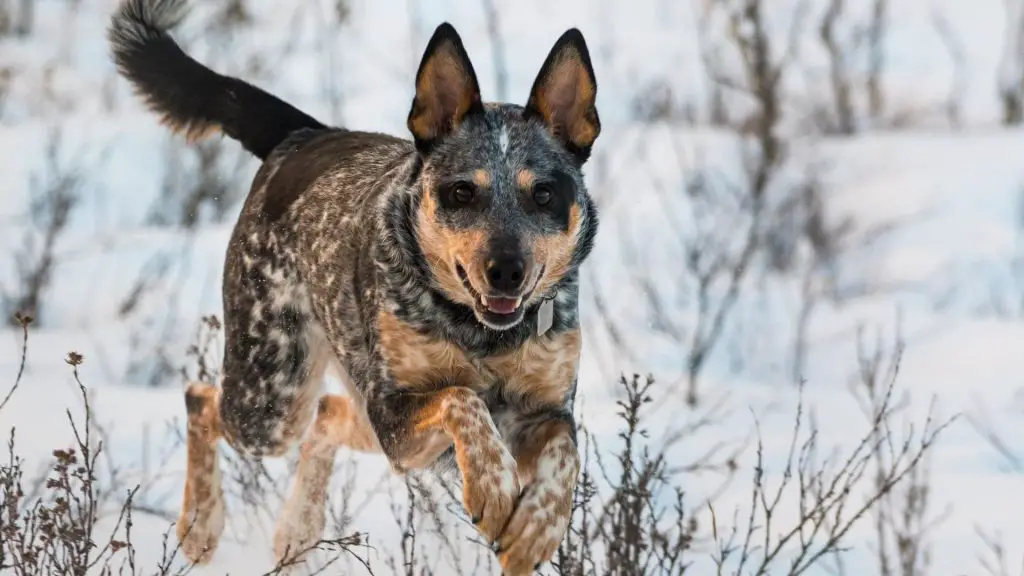
Another reason your blue heeler may not be calming down is because of their natural instincts.
As we mentioned before, these dogs were originally bred for herding.
This means they have a strong instinct to chase and herd other animals and even people!9
While this may not be a problem if you live on a farm, it can be an issue if you live in the city!
If your dog is constantly chasing cars or people, it may be because they are trying to herd them.
In this case, you will need to provide your dog with another outlet for their energy, such as agility training or fetch.
Herding breeds like the blue heeler can also benefit from having a “job” to do, such as being a therapy dog or helping you out with chores around the house.
This will help to keep their mind occupied and prevent them from getting into trouble.
4. Improper Training
If your Blue Heeler hasn’t been properly trained, they may have never learned how to calm down.
In addition, they may have been accidentally trained to be hyper!
It’s very easy to accidentally encourage hyper behavior in cattle dogs.
Proper training is essential for cattle dogs to learn how to control their energy and be calm when needed.
Without it, they may never learn how to properly calm down.
If you have a Blue Heeler puppy, it is time to start training them.
And If they’re older and haven’t been trained, it’s not too late to start.
It may take a little longer for them to learn since they’ve had a lifetime of bad habits to break.
5. Overstimulation
Another reason your blue heeler may be hyper is due to overstimulation.
Unfortunately, dogs can get overstimulated just like humans!
This usually happens when they are around many people or other dogs and become too excited.
Signs of overstimulation in dogs include panting, tongue-flicking, and dilated pupils.
If you see these signs, it’s important to remove your dog from the situation help keep a cattle dog calm.
You can do this by taking them for a walk or letting them have some quiet time in their crate.
6. Puppy Energy
If your Blue Heeler is under 2 years old, they may still have their puppy energy!
Puppies are full of energy, and it can be hard to keep up with them.
They need a lot of exercise, mental stimulation, and training to help them learn how to calm down.
One way to help tire out a puppy is by playing fetch with them.
You can also give them chew toys, puzzles, etc.
How To Calm An Australian Cattle Dog
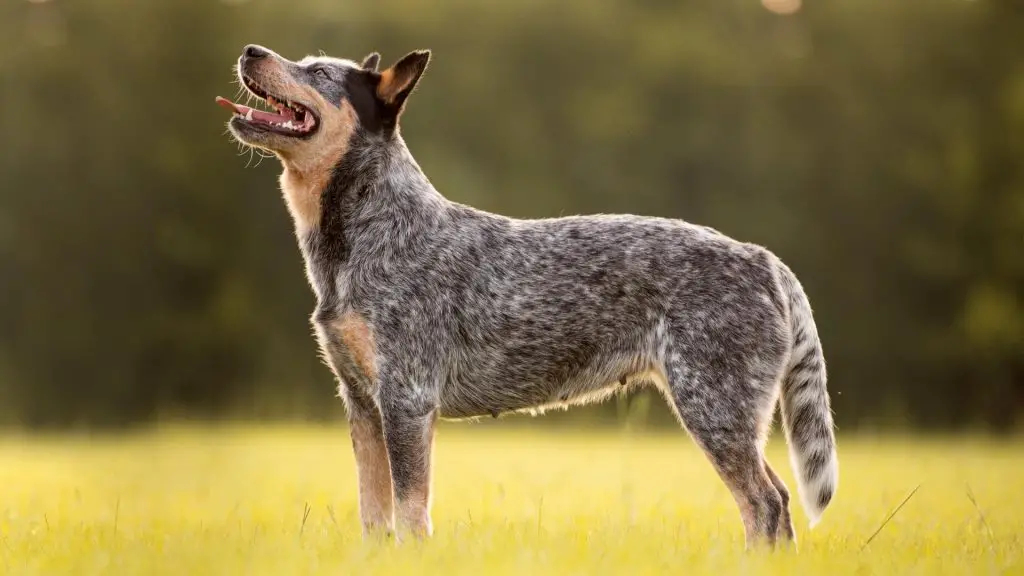
It’s important to understand a dog breed nature to really understand their behavior.
While you cannot change a dog’s natural instinct, you can provide outlets for their energy.
You can also provide training, structure, and leadership to help an Australian Cattle Dog learn how to calm down when needed.
Aside from having a calm environment and waiting for the time your Blue Heeler does calm down, there are a few things you can do to help.
Exercise
Yes, this is a pretty obvious tip, but it’s the best way to control their energy.
Giving energetic dogs a proper exercise routine is one of the best ways to control their energy level.
You can take them to the dog park, on long walks, or even for runs!
You can also play fetch with them or engage in other forms of exercise like agility training.
Automatic ball launchers can be an excellent tool for those without much time. This device can tucker them out all without much effort on your part.
The key is finding an activity they enjoy and sticking to a routine.
This will help them use up some of their energy to be calm when needed.
Socialization
The cattle dog breed is very social and can benefit from meeting new people and dogs regularly.
This will help get them used to different people and environments.
Socializing your dog early on is important, so they know how to act around others.
This can allow them to remain calm, cool, and collected regardless of the situation.
You can do this by taking them to the dog park, obedience classes, or even having people over to your house.
This will help keep a blue heeler calm.
Professional Training
So to keep Australian Cattle Dogs calm, training is essential.
This is especially true for those that have never been properly trained.
Cattle dogs are intelligent and can learn quickly, but they must be taught what is expected of them.
If you are unsure of how to train your dog, it’s best to seek out professionals.
There are many different types of trainers, so you’ll need to find one that’s a good fit for you and your dog.
We recommend Steffi from Spirit Dog Training.
Get Good Toys
This breed loves to work, and they need a job to do.
If they’re not given a job, they will find one themselves, which is usually something you don’t want them to do.
To keep them calm, it’s important to give them good toys to keep their minds challenged.
This can include things like Kongs, chew toys, puzzle toys, and more.
You can also give them a bone to chew on or even a treat-dispensing toy.
This will help keep their minds challenged and prevent boredom.
A tired dog is a calm dog, so ensure you provide your blue heeler with plenty of mental stimulation.
Australian Cattle Dog Behaviour Problems
Australian Cattle dogs can have a lot of pent-up energy.
This can be problematic since they are intelligent dogs that need a lot of stimulation.
When they don’t get it, they can become bored, leading to destructive behaviors.
Here are some common Behavioral problems Blue Heelers can have:
- Chewing
- Digging
- Barking
- Herding people or animals
- Chasing cars or other animals
- Aggression
- Hyperactivity
Knowing their common behavioral problems can help you stop them from developing.
In addition, most of these can be easily handled with proper training.
Final Thoughts
Now that you know more about when the Blue Heeler breed calms down and why they might not be, you can start to take steps to help them.
Remember, each dog is different and will respond to different things.
It may take some trial and error to find what works best for your dog, but eventually, you will find what works, and they will start to calm down.
Other posts you may find interesting:
Blue Heeler Rat Terrier Mix: All You Need To Know
